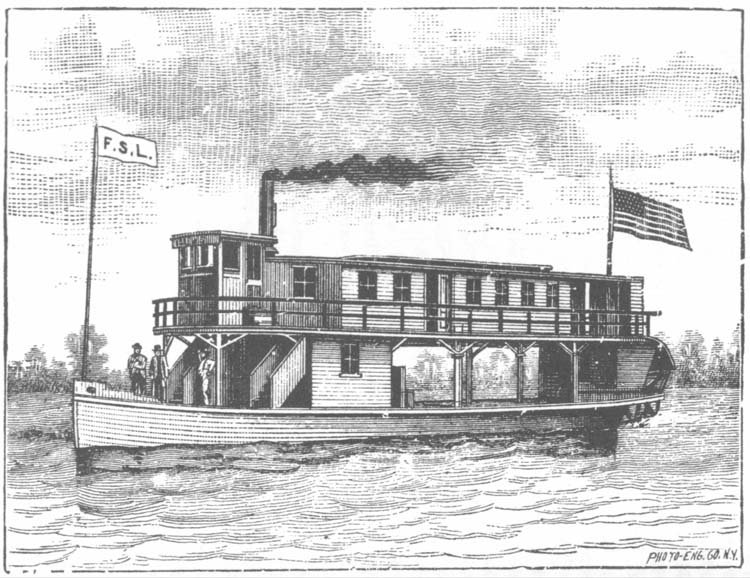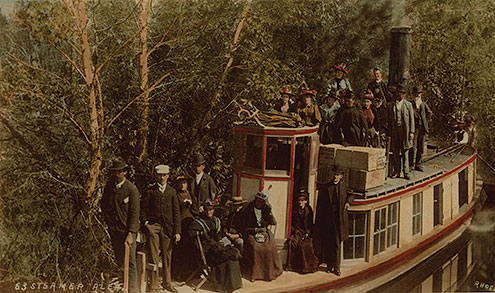The region south of Santa Fe Lake was not settled until after the Seminole War in 1842, although it was on the Spanish mission trail from St. Augustine from about 1600 to 1763 and, during the English (1763-1784) and second Spanish (1784-1821) periods, on the overland route to Pensacola. Florida’s first Federal highway, the 1826 Bellamy road, followed about the same path. Many of the early landowners came from South Carolina and Georgia. After the decade of Reconstruction following the Civil War, an influx of new families came to the region, many to engage in planting orange groves, a few of which had been started in the 1850’s.
Because the route of the Florida Railroad, completed in 1861 and reorganized after the War, passed west of the region, the Santa Fe Canal Company was chartered in March of 1877 to open a waterway from the railroad in Waldo through Lake Alto to Santa Fe Lake. In May of 1877 Alexander Goodson, Isaac Weston, and Meridth Granger, platted a 30-block town site south of the little bay on the southeast side of Santa Fe Lake. The old Bellamy Road was the main east-west axis, with Centre Street, straddling the Alachua, Putnam, and Clay county border, as the north-south axis.


The origin of the town name, Melrose, is shrouded in conflicting legends. The canal linking Waldo to Santa Fe Lake was completed in March of 1881. The stern-wheel steamer, F.S. Lewis, built in Waldo, made its maiden voyage in April 1881. Northern visitors, who came to improve their health and invest in orange groves, built winter cottages or stayed at the boarding houses or the several hotels that catered to the winter tourists. The town soon had a number of general stores, a sawmill, cotton gin, livery stables, several churches, and a high school. The Western Railroad reached Melrose from Green Cove Springs in 1890. The town was then a thriving waterfront resort, lake port, and a horticultural and agricultural center. Devastated by the freezes of 1894-95, the citrus groves never recovered. Melrose became a quiet lakeside retreat for seasonal and week-end residents, with a small permanent population. In 1901 Melrose was incorporated but gave up its charter in 1917. Many of the nineteenth century homes and buildings still survive. The Melrose Historic District was listed on the National Register of Historic Places in 1990.
This marker is located on S.R. 26 between Quail & Trout St.
The Melrose Historic District is a 250-acre U.S. historic district in Melrose, Florida that was listed on the National Register of Historic Places in 1990. It is bounded by Seminole Ridge Road, Grove Street, South Street, Quail Street, and Melrose Bay.
